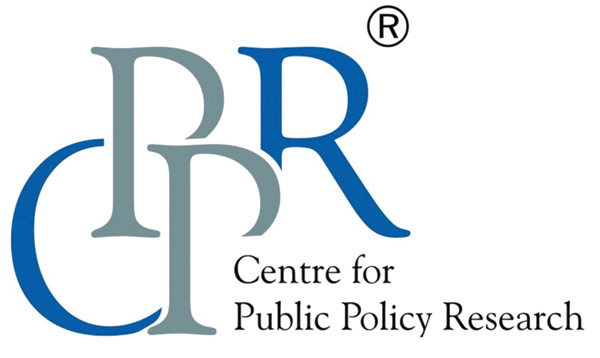Articles
Even though there may be no stated ‘allocation for better governance’ in the budget outlay, the intent and spirit of the budget speech for structural reforms will send the right signals to the electorate as well as to the markets.

By D Dhanuraj and Anupama Ghosh
The resounding electoral victory under the leadership of Prime Minister Narendra Modi has forced poll pundits to come closer to the reasons and ground realities behind such a mammoth show by the Bharatiya Janata Party (BJP). Many of the analyses point towards a much better and improved public service delivery in the first innings of the Modi government as the reason for such a spectacular show.
Better governance is often identified with the timely, efficient and effective deliveries of the promises by the government. It seems that the aspirations of those at the bottom of the pyramid have been fulfilled and it is now pertinent for the BJP to improve the delivery system further in the next five years.
In 2014, Modi started his innings by stating ‘Minimum Government and Maximum Governance’. The idea was based on the fact that while the past governments were larger in size, the deliverables had been less. The BJP-led National Democratic Alliance (NDA) government in 2014 formed the smallest Cabinet in 16 years, with many ministers holding similar portfolios. The 29 committees of group of ministers (GoM) or ‘empowered GoMs’ of the Congress-led United Progressive Alliance (UPA) era were abolished
Jan-Dhan-Aadhaar-Mobile (JAM) trinity was introduced to tie subsidies, pensions and scholarships to citizens’ biometric ID cards and transfer funds directly to the bank account holders, eliminating the role of middlemen and reducing the likely occurrence of corruption. Even though there are avenues for improvements in JAM, the trinity has set a new paradigm for the poor and the needy, which was reflected in the 2019 election results.
The Pradhan Mantri Ujjwala Yojana offering LPG connection to the economically backward class has been another reason for the voters to repose faith in the government. Same is the case with the provision of toilets as part of Swachh Bharat, and electricity connection to all the households as part of Saubhagya — PM Sahaj Bijli Har Ghar Yojana. The major difference has been that it ensured a better delivery channel using the JAM trinity. The post-poll surveys show that many in the backward states expect these schemes to improve in the coming years and how the upcoming budget allocates the resources for these schemes will be keenly watched upon.
The Modi government has announced piped water to every household in India in the next five years and formed the Jalshakti ministry to augment the programme. Although there are many questions hovering around the viability of the project, the citizens will again expect a better model of delivering in comparison to what has been practiced over the years.
BharatNet is a much anticipated project of the government which aims at facilitating the delivery of e-services to rural India. Though crores have been spent, the number of gram panchayats with Internet connectivity remains paltry. The issue of providing ceaseless last mile connectivity remains a serious challenge. To overcome this, the BJP has promised the implementation of Rashtriya Gram Swaraj Abhiyan in a focused manner to build the capacity of Panchayati Raj members and ensure effective delivery of schemes at the grassroot levels.
In the BJP manifesto, Sankalp Patra, the party promised the promotion of good governance practices in civil services, judiciary and police forces. It vowed to ensure better implementation of policies and co-ordination by merging similar and complementary departments into sectoral ministries to enable policymakers frame and implement policies smoothly. For the quick disposal of judicial matters, it plans to increase the number of alternative dispute resolution. To counter cyber threats, which may arise simultaneously with the ‘digital’ push, it has vowed to expedite police reforms at the state levels to enable the state police forces to deal with cyber-crimes.
The use of artificial intelligence, block chains, big data analytics, technology aid in agriculture, online payment and the digital infrastructure is identified by the government to speed up the reform processes in different sectors. In this context, Startup India coupled with the Atal Innovation Mission, technology centres for mentoring and skilling the youth, can become the hallmark of the second tenure of the Modi government. However, its success will be mostly dependent on effective delivery. The start-up culture and the ecosystem could be leveraged to enhance the delivery of governance.
While the election verdict has attested the better delivery mechanism achieved by the government, it still has a steep hill to climb, to make the delivery system more robust by plugging in the leakages and making sure it reaches the largest swathes of the population, especially in rural India.
Thus, much will be expected in terms of necessary allocation for various schemes in the upcoming budget. Even though there may be no stated ‘allocation for better governance’ in the budget outlay, the intent and spirit of the budget speech for structural reforms will send the right signals to the electorate as well as to the markets that would also reflect on the nature of the governance in the coming days.
This article was published in Money Control click to read
D Dhanuraj is chairman and Anupama Ghosh is senior research associate at Centre for Public Policy Research. Views expressed by the authors are personal and need not reflect or represent the views of Centre for Public Policy Research.



